Hepatocyte CYR61 polarizes profibrotic macrophages to orchestrate NASH fibrosis
- PMID: 37756381
- PMCID: PMC10874639
- DOI: 10.1126/scitranslmed.ade3157
Hepatocyte CYR61 polarizes profibrotic macrophages to orchestrate NASH fibrosis
Abstract
Obesity is increasing worldwide and leads to a multitude of metabolic diseases, including cardiovascular disease, type 2 diabetes, nonalcoholic fatty liver disease, and nonalcoholic steatohepatitis (NASH). Cysteine-rich angiogenic inducer 61 (CYR61) is associated with the progression of NASH, but it has been described to have anti- and proinflammatory properties. We sought to examine the role of liver CYR61 in NASH progression. CYR61 liver-specific knockout mice on a NASH diet showed improved glucose tolerance, decreased liver inflammation, and reduced fibrosis. CYR61 polarized infiltrating monocytes promoting a proinflammatory/profibrotic phenotype through an IRAK4/SYK/NF-κB signaling cascade. In vitro, CYR61 activated a profibrotic program, including PDGFa/PDGFb expression in macrophages, in an IRAK4/SYK/NF-κB-dependent manner. Furthermore, targeted-antibody blockade reduced CYR61-driven signaling in macrophages in vitro and in vivo, reducing fibrotic development. This study demonstrates that CYR61 is a key driver of liver inflammation and fibrosis in NASH.
Conflict of interest statement
Figures
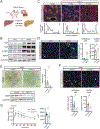
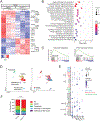
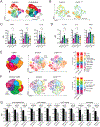
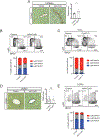

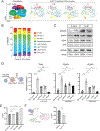
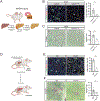
References
MeSH terms
Substances
Grants and funding
LinkOut - more resources
Full Text Sources
Medical
Molecular Biology Databases
Miscellaneous

